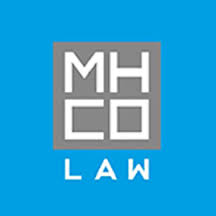LEGAL UPDATE| SUPREME COURT CLARIFICATION ON EXTENSION OF LIMITATION PERIOD
The Supreme Court of India in a recent case of Sagufa Ahmed vs Upper Assam Plywood Products has held that the order passed by them on 23 March 2020 (March Order) extending the period of limitation on account of the Covid-19 pandemic would not be applicable to the time period up to which delay can be condoned under the discretion provided for by a statute.
- The Appellants together claimed to hold 24.89% of the shares of the Upper Assam Plywood Products Private Limited (Respondent Company). The Appellants had moved an application before the National Company Law Tribunal, Guwahati (NCLT) for the winding up of the company. The petition was dismissed by an order dated 25 October 2019 (NCLT Order).
- The Appellants stated that they had applied for the certified copy of the NCLT Order on the 21 November 2019. The Appellants further stated that they received the certified copy of NCLT Order on 19 December 2019.
- Pursuant to receiving the certified copy of the NCLT Order on 19 December 2019, the Appellants chose to file the statutory appeal before the National Company Law Appellate Tribunal (NCLAT) on 20 July 2020. The Appeal was filed along with an application for condonation of delay.
- By an order dated 4 August 2020, the NCLAT dismissed the application of condonation of delay and the appeal on the ground that it was barred by limitation and the NCLAT had no power to condone the delay beyond the prescribed period of 45 days as provided under Section 421(3) of the Companies Act, 2013. This application filed by the Appellants in the NCLAT had been moved in July 2020 but the period of limitation stood lapsed on 18 March 2020. The Appellants herein approached the Supreme Court in an appeal from the decision of the NCLAT dated 4 August 2020.
- The main contentions before the Supreme Court were that: (a) NCLAT failed to note of the March Order passed by the Supreme Court wherein the period of limitation for filling any proceeding was extended from 15 March 2020 and thereafter until further orders and; (b) that the NCLAT had wrongly calculated the period of limitation from the date of the NCLT order which was contrary to the provisions of Section 421(3) of the Companies Act,2013.
- Section 421(1) provides for a remedy of an appeal to the NCLAT against the order of the NCLT. Section 421(3) prescribes the period of limitation of 45 days for filing an appeal and the proviso thereunder confers a limited discretion upon the NCLAT to condone the delay.
- The certified copy of the order of the NCLT was received by the Appellants on 19 December 2019. The Appellants had 45 days to file an appeal which expired on 2 February 2020. By the virtue of the proviso, the NCLAT was empowered to condone the delay up to a period of 45 days. This period started from the 2 February and expired on 18 March 2020. The Appeal was file before the NCLAT on the 20 July 2020. The Appellants relied upon the March Order of the Supreme Court wherein the period of limitation for filling any proceeding was extended until further orders.
- The Supreme Court clarified that vide its March Order, what was extended was only the prescribed period of limitation and not the period up to which delay can be condoned in exercise conferred by the statute. The order passed by the Supreme Court was intended to benefit vigilant litigants who were prevented due to the pandemic and the lockdown, from initiating proceedings within the period of limitation prescribed by general or special law.
- Further referring to Section 10 of the General Clauses Act, 1897 and the provisions of the Limitation Act the Supreme Court stated that the expression ‘prescribed period’ appearing in Section 4 could not be construed to mean anything other than the period of limitation. Any period beyond the ‘prescribed period’, during which the Court or Tribunal has the discretion to allow a person to institute the proceedings, cannot be construed to be ‘prescribed period’. Therefore, the Appellants could not have claimed the benefit of the March Order for enlarging, even the period up to which delay can be condoned. Hence the Supreme Court upheld the order of passed by the NCLAT while dismissing the appeal and application for condonation of delay.
MHCO Comment :
This judgment provides further clarification to the interpretation of the term `prescribed period` under the Limitation Act, 1963 and a welcome precedent for all the lower courts who shall be dealing with the issues pertaining to the period of limitation. This judgement shall further provide a much-required clarity to all those cases wherein the blanket benefit of extension of limitation period has been taken on account of orders passed by the Supreme Court extending the period of limitation since lockdown was imposed in the country.
The views expressed in this update are personal and should not be construed as any legal advice. Please contact us directly on +91 22 40565252 or legalupdates@mhcolaw.com for any assistance.
